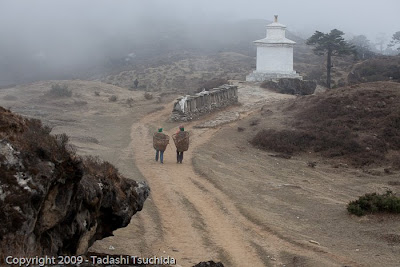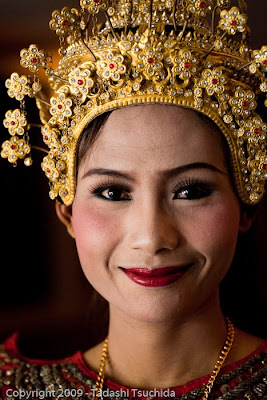In 1963 Sir Edmund Hillary and the famous Sherpa, Tenzing Norgay became the first mountaineers to verifiably reach the summit of Mount Everest. This was Sir Edmund Hillary’s most famous accomplishment, but not his most important – nor perhaps his most difficult. Certainly it was not climbing Everest that brought him virtual demigod status among the Nepalese. Rather, it was his lifelong dedication to helping the Sherpa people in Nepal to improve their lives in ways that they themselves requested.
In a famous conversation, Hillary asked the Sherpas what he could do for them to repay them for their friendship and invaluable assistance with his various expeditions. Their reply was that, while there was little that they envied about Westerners, they did very much wish their children to be educated. As one Sherpa put it, the children “have eyes, but still they are blind.” Or, as Hillary’s assistant, James F. Fisher, writes in his book, “The Sherpas realized early on that although they had never needed special institutions to learn how to become Sherpas – the traditional avenues of socialization and enculturation were enough for that – they needed modern schools if they were to have hopes of dealing with the outside world in anything but a subordinate, submissive way.” For context, it is important to understand that this conversation occurred at a time when the Sherpa’s income from trade with Tibet had recently been cut off by the Chinese closing the border, but new business opportunities were being created by the influx of Western tourists that were beginning to visit Khumbu.
I decided to visit Khumbu to see for myself the effects of Hillary’s work. For my flight to Lukla, I arrived bright and early at 5:15 a.m. Just in time to hurry up and wait for my 6:15 flight that was delayed due to weather in the mountains. However, I was fortunate that the flight was not cancelled, and by 10:00 we were cleared to go. The flight to Lukla is quite beautiful, but the approach to the airfield can be a bit hair-raising – actually, it is quite fun if you like flying and have faith in statistical safety. The airfield is a famously difficult one to land at, and only open to STOL (Short Takeoff and Landing) planes. Not only is the airfield short, at high altitude, and surrounded by mountains (and hence, tricky winds), but the runway is not level. Rather, pilots must land uphill. At least this means that takeoffs are downhill, which is helpful in the thin air. There are not too many flights that I’ve been on where the landing has received applause from the passengers, but our pilot and co-pilot certainly earned theirs. (If you’re interested in seeing what the landing approach is like, go to www.youtube.com and search for “Lukla Landing,” there are a number videos posted)
My base for day hikes to the Hillary Schools was the town of Namche Bazaar. While someone in good shape and acclimatized to the altitude could walk from Lukla up to Namche in one long day, I was grateful for the excuse that acclimatization gave me to take two days for the journey. I found the second day, which ends with a 2 ½ hour, steep uphill grind, strenuous enough all by itself. It also gave me an appreciation for the hard work that the people in this region do.
Porter and Prayer Carvings
We tend to hear stories about Sherpas carrying massive loads on their backs as they effortlessly run up mountainsides. While the loads they carry verge on the superhuman, they are in fact quite human. They pant, sweat and need to rest frequently. All goods arrive in Khumbu this way, so there is steep price increase on everything that you buy. For instance, a bottle of water that would cost $0.18 US Dollars in Kathmandu will cost you $1.18 in Namche Bazaar. I understand that the further you go from Lukla, the higher the prices go, which makes a lot of sense – I sure wouldn’t carry bottles of water up mountains for free. Refilling your water bottle at the tap and using water purifier tablets saves money, and does not flood Khumbu with discarded plastic bottles.
Namche Bazaar is the main hub from which the trek to Everest Base Camp begins. From high vantage points near town, Mount Everest is visible in the distance, but reaching its base takes about five days of hard walking and acclimatization. Unfortunately, I did not have time to do any real trekking, as my time was short, and I was there to visit schools. Perhaps this was as well. Due to the strenuous walking needed to reach each school, and a persistent cold, I was only able to visit two of the three schools that I had intended, but was very fortunate in the quality of the interviews that I got. I was also extremely lucky to be able to interview the doctor at Khunde Hospital (also built by Hillary and co.), and I provide his story here as an excellent example of what the Hillary Schools, and scholarships through The Hillary Foundation/Himalayan Trust have made possible for the Sherpas.
Dr. Kami Temba Sherpa is a soft-spoken, intelligent man in his early fifties whose entire life has been shaped by Sir Edmund Hillary’s work. When Hillary constructed a school in his village of Thame, Kami was six years old. Though his siblings were all too old to start school, Kami was the perfect age, and so he was the only one who got an education. He was a bright, motivated student who loved learning, and was consistently at the top of the class. He recalls that Sir Edmund Hillary used to visit the school twice a year, and Kami was greatly impressed by hearing Hillary’s Sherpa guide speak excellent English. He was determined that he too would learn English, and so he studied hard. His studies payed off, and as he progressed, he realized how poor the guide’s English had really been.
To continue past 4th grade, Kami had to attend middle school outside his village at the famous Hillary school in Khumjung. Walking from Thame to Khumjung and back takes about four hours roundtrip. So, for his first year at Khumjung, Kami and his best friend rented a small room near the school. Soon they found that with all of the necessary tasks of cooking their own meals, gathering their own firewood, and fetching water (water was a problem in Khumjung at that time) took so much time and energy that they decided it was better to just live at home and walk for four hours a day – at least dinner would be ready for when they arrived. Day after day they made this journey until, at last, they completed 7th grade at Khumjung.
Each year Hillary’s foundation made two scholarships available for students to pursue a high school education, which at that time was not available locally (Now it is possible to complete high school in Khumjung). Both Kami and his friend were awarded these scholarships and were able to continue their education in Kathmandu. Unfortunately, none of their other friends were able to continue to high school, because without assistance it was financially impossible. After completing his high school education, Kami returned to his village and served for a short time as a teacher at the primary school that he had attended as a boy. Soon, however, Kami made the acquaintance of the doctor at Khunde hospital, and was asked if he would be interested in training to become a health worker in Thame. He accepted the offer, and after some months of training in Khunde, returned to his village.
After a little more time of serving as both a teacher and a health worker in Thame, Kami accepted an offer to become an assistant at the Khunde Hospital. After holding this position for about twelve years, he was asked if he would be interested in training to become a doctor. So, once again the Himalayan Trust paid for Kami to go to school. He attended medical school at the University of the South Pacific in Fiji. After five and a half years of study in Fiji, and several years of internship, residency and work in Kathmandu and elsewhere in Nepal, Dr. Kami returned Khunde Hospital, where he has served as a doctor for the past seven years. Now, Kami’s son has finished medical school and has decided to spend a couple of years in Khunde working alongside his father.
Not only did Hillary’s efforts have a positive effect on Kami’s life, but the hospital Hillary built in Khunde has had huge ramifications for the lives of the Sherpas and the other ethnic groups in the region. Previous to Hillary’s construction of the Khunde Hospital, there were huge incidences of thyroid deficiency diseases such as cretinism and goiter among the Sherpas, due to a lack of iodine in their diet. Now, thanks to Iodine pills and injections administered in the schools by Khunde Hospital, these problems have nearly been eliminated in Khumbu. The population rate in Khumu has also decreased due to the availability of family planning. Having smaller families with fewer mouths to feed has lead to an increase in living standard and better health among the Sherpas.
There is much debate over the effect that introducing modern education has on a culture. There is always the risk that education will make children feel that their culture, their parents and their lives are backwards. However, I think that it is hard not to see Hillary’s work with the schools as a great success. In fact, the Hillary Schools may have helped the Sherpas to maintain their sense of cultural identity. In many countries, the businesses that serve and profit from tourists are mainly owned by foreigners, while the local people are low-paid workers in these establishments. Because they had access to education, the Sherpas have been able to use tourism to their own advantage. The Sherpas are the ones who own most of the trekking agencies, outfitters, restaurants and guest houses – they even manufacture their own line of outdoor apparel. This financial success has allowed them to put more money into building monasteries and afford to send their children to study at them. Tibetan Buddhism is the cornerstone of Sherpa culture, and where it had once been in decline with fewer and fewer monks staying in the monasteries, there is now a resurgence.
Prayer Wheels, Khumjung
The Sherpa language is taught to the young children in school, alongside Nepali and English. And, of course, financial success and the help of The Himalayan Trust, have allowed Sherpa parents to send their children to the best available schools, whether in Khumbu or elsewhere in Nepal, and to insure that their children have every opportunity for their own success. While nothing is ever simple or some concessions, compromises and tradeoffs, from what I’ve seen, it seems that the Hillary Schools have allowed the Sherpas the ability to successfully adapt to, and profit from, new circumstances, while maintaining their pride and their cultural identity.
[In learning about the Sherpas, I have been greatly aided by James F. Fisher’s book, “Sherpas: Reflections on Change in Himalayan Nepal.” It is available from The University of California Press. James F. Fisher was Hillary’s school-building assistant in the 1960’s, and is Professor ofAnthropology at Carleton College.]



















